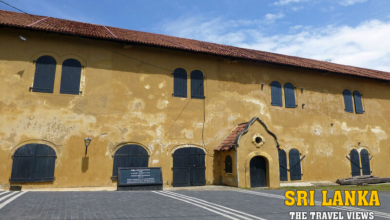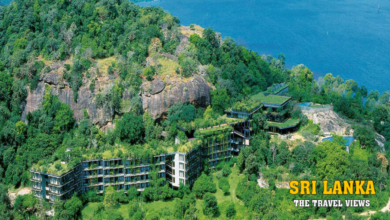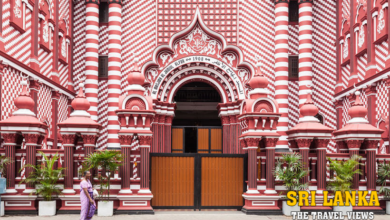Bundala National Park
Introduction
Bundala National Park is situated in the southern part of Sri Lanka, near to Hambantota and southeast of Colombo. Nearly 62 square km of land make up the park. Bundala National Park was designated a Biosphere Reserve by UNESCO. The park’s terrain includes mudflats, marshes, lagoons, and sand dunes.
Species, Particularly migratory species, have a large habitat in Bundala National Park. Numerous bird species may be found in Bundala, which is unusual given that big flocks of flamingos move through the area. It is inhabited by a wide range of creatures in addition to birds. The park’s habitat supports a variety of animal species, including crocodiles, as well as several fish species.

Among the well-known creatures that may be found here are elephants, leopards, spotted deer, and many kinds of turtles.
Bundala National Park habitat’s intertwined saltwater/freshwater balance supports a staggering array of vegetation and wildlife. The park’s stunning terrain attracts photographers and wildlife enthusiasts. Beautiful beaches, eye-catching sand dunes, and lush meadows offer a striking perspective of this park. Another highlight for visitors to this region is the breathtaking sunsets along the coast. Visitors have the option of taking a Jeep Safari or using tour guides that are offered by regional operators to get up close and personal with the park’s marvels.
Location
The Hambantota District of Sri Lanka’s Southern Province is location of Bundala National Park. It is located around 251 kilometers (156 miles) southeast of Colombo, Sri Lanka’s capital.
Ecological Important
Bundala National Park’s wetland habitats, which include lagoons, salt pans, mudflats, and sand dunes, are what it is most famous for in terms of ecology. Both migratory and resident bird species depend on these areas for survival. UNESCO recognized this park as a biosphere reserve and is regarded as a notable Ramsar Wetland site. The park is accessible by road and is best visited during the dry season, which runs from May to September. Tissamaharama, the closest town to the park, acts as a gateway for visitors.
Biodiversity
Bundala National Park offers a very good of opportunities for birdwatchers. More than 200 bird species, including various migratory ducks and waders have it as their home. The park is famous for Greater Flamingo populations. In addition to a variety of birds, Bundala is also home to a grate range of other animals, including elephants, crocodiles, turtles, and several types of mammals, reptiles, and amphibians. The park’s presence of the secretive Sri Lankan leopard is another remarkable feature. To preserve the unique ecosystems and creatures, Bundala National Park is one of a distinctive place. There are more efforts being carrying out to preserve the nature of the eco system, and to maintain the balance of wetland habitat.

Safari Tours
Bundala National Park visitors can explore the park on organized safaris and guided trips. Safari jeeps are a popular kind of transportation for nature lovers and visitors. Safety is a top consideration on safaris. The safety of guests is guaranteed by guides, who are also taught how to safely handle wildlife interactions.
Threads
As a result of drainage of excess water from irrigation systems the water quality in the lagoons has been changed. The spread of two nonnative plants such as, Prosopis Juli flora and Opuntia dillenii, around the tidal plains in Malala-Ambilikala Lagoons and the sand dunes and nearby scrub forests. Due to that, the habitats of the wading birds and wildlife in the shrub forest and dunes is been in danger.
Conclusion
At last, Bundala National Park example for the natural beauty of Sri Lanka’s southern coast. Its unique wetland habitats, rich with various fauna and particularly famous for its bird population, making it a conservation and eco-tourism treasure. The park’s status as a Ramsar Wetland site and UNESCO biosphere reserve emphasizes its worldwide ecological significance.
Conservation efforts to conserve and nurture these valuable ecosystems and their inhabitants are critical to the long-term sustainability of this natural sanctuary. Bundala National Park is a bright example of the possibilities for harmony between humankind and the natural environment as we look to the future.

Bundala National Park is an invitation to explore, study, and enjoy the splendors of the natural world for people seeking a meaningful connection with nature and an opportunity to observe the majesty of Sri Lanka’s biodiversity. It demonstrates the necessity of protecting our planet’s ecological assets for future generations.






